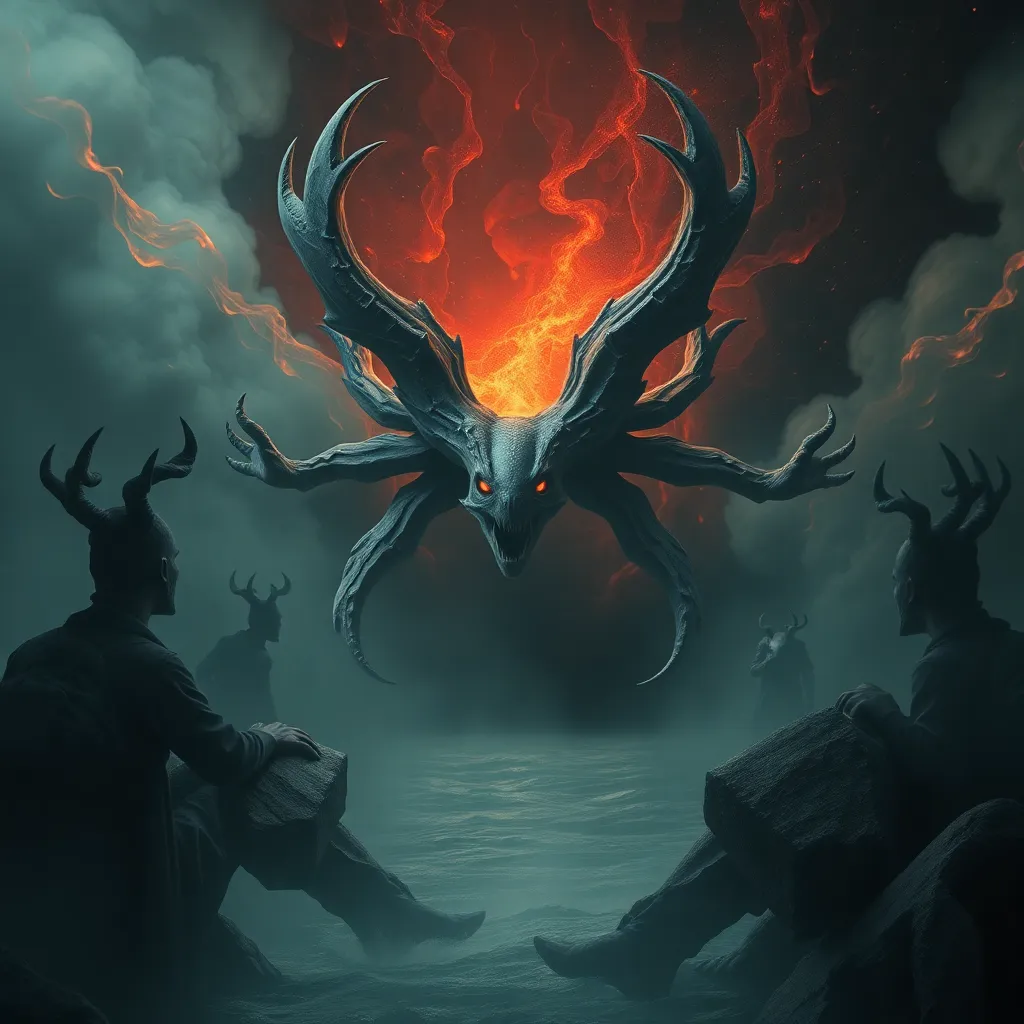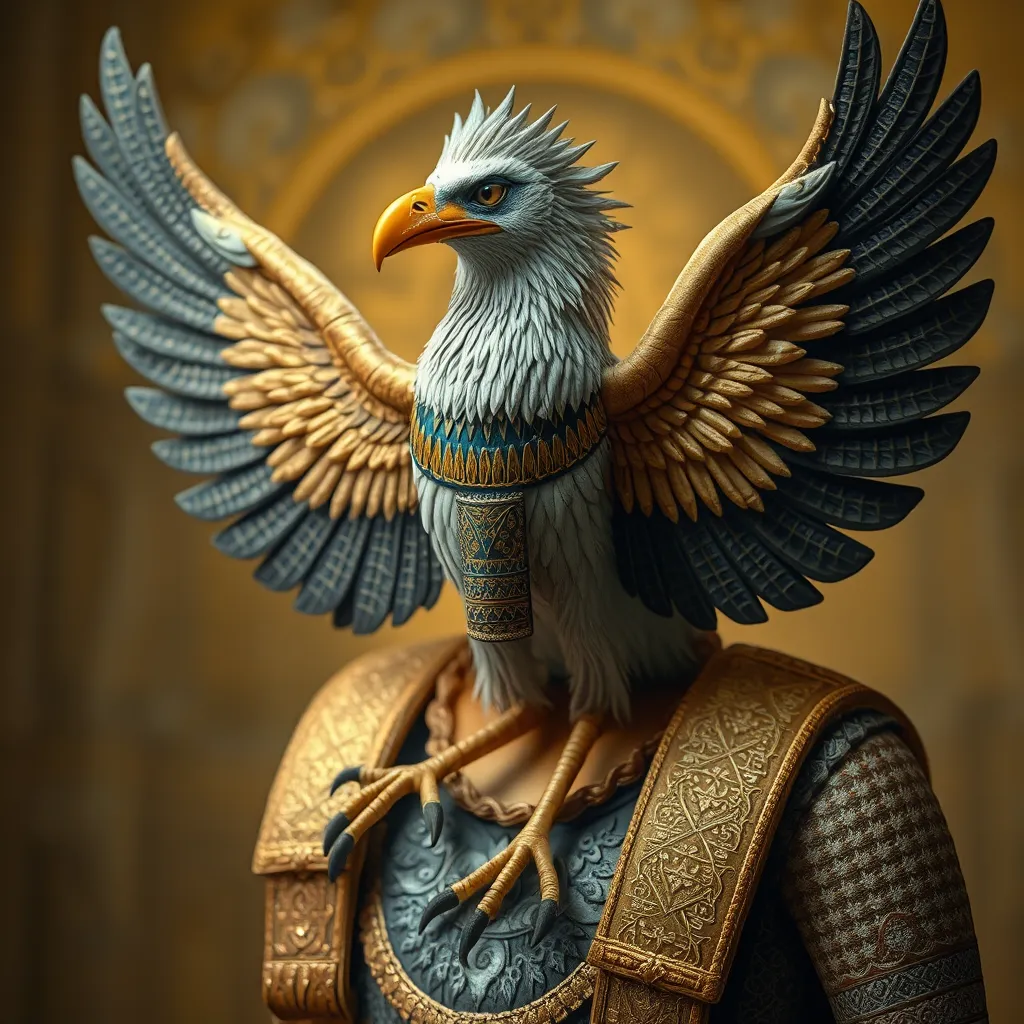The Hecatoncheires and the Human Condition: Perspectives on Fear, Wonder, and Mortality
I. Introduction
The Hecatoncheires, often referred to as the “Hundred-Handed Ones,” are fascinating figures in ancient Greek mythology. These formidable beings, each possessing a hundred arms and fifty heads, were born from Gaia and Uranus, representing the primordial forces of chaos and power. Their significance extends beyond mere physicality, embodying fundamental aspects of the human experience.
In ancient Greek culture, the Hecatoncheires were not only symbols of brute strength but also represented the complexities of the human condition, particularly in relation to fear, wonder, and mortality. This article explores how the Hecatoncheires can be interpreted as reflections of these themes, offering insights into the human psyche and our existential struggles.
II. The Mythological Background of the Hecatoncheires
The origins of the Hecatoncheires can be traced back to the primordial deities of Greek mythology. They are often depicted as the offspring of Gaia (the Earth) and Uranus (the Sky), making them siblings to the Titans, who would later play a significant role in the cosmic battles of Greek lore.
During the Titanomachy, the war between the Titans and the Olympian gods, the Hecatoncheires emerged as powerful allies to Zeus. Their immense strength and terrifying appearance made them formidable opponents against the Titans. They were instrumental in the eventual victory of the gods, symbolizing the triumph of order over chaos.
In mythology, the Hecatoncheires also symbolize the chaotic forces of nature, representing the unpredictable elements that can evoke both fear and awe in humanity. Their presence in the myths serves as a reminder of the thin line between creation and destruction, as well as the balance that must be maintained in the universe.
III. Fear: The Hecatoncheires as Symbols of Terror
The Hecatoncheires evoke a profound sense of fear, primarily due to their monstrous appearance and extraordinary abilities. With their hundred arms capable of wreaking havoc and their multiple heads that could see in every direction, they represent the fears of the unknown and the uncontrollable forces of nature.
From a psychological perspective, encounters with such overwhelming figures can trigger deep-seated fears within individuals. The unknown often breeds anxiety, and the Hecatoncheires personify the chaos that lurks beyond human comprehension. This terror can lead to various human behaviors, including:
- Creating myths and stories to explain the unexplainable
- Formulating belief systems to cope with existential dread
- Seeking order and control in a chaotic world
Fear, therefore, becomes a catalyst for human behavior, shaping societies and cultures throughout history.
IV. Wonder: The Awe-Inspiring Aspects of the Hecatoncheires
While the Hecatoncheires are symbols of fear, they also embody wonder. This duality is evident in many mythological narratives, where fear and awe coexist. The presence of the Hecatoncheires evokes a sense of the sublime—an overwhelming experience that can inspire both terror and admiration.
In nature, the Hecatoncheires can be seen as representations of the sublime, embodying the raw and untamed aspects of the natural world. Their size and strength remind us of the vastness of the universe and our own insignificance. This feeling of awe can have a profound impact on human creativity and artistic expression, leading to:
- Art inspired by the grandeur of natural forces
- Literature that explores the interplay of fear and beauty
- Philosophical inquiries into the nature of existence
Ultimately, the Hecatoncheires challenge us to confront our fears while also inspiring a sense of wonder about the world around us.
V. Mortality: Confronting Human Existence through the Hecatoncheires
The theme of mortality is intricately woven into the narrative of the Hecatoncheires. In mythology, they serve as a reminder of the inevitability of death and the chaotic forces that can lead to destruction. The Hecatoncheires confront humanity with the stark reality of existence, prompting reflections on our own mortality and the fear of the unknown.
This confrontation with death can lead to profound insights about the human experience. The Hecatoncheires teach us essential lessons about:
- Acceptance of the transient nature of life
- Embracing the chaos as a part of existence
- Finding meaning in the face of uncertainty
By engaging with the myth of the Hecatoncheires, individuals can navigate their own fears surrounding mortality and learn to live more fully in the present.
VI. The Hecatoncheires in Modern Interpretations
In contemporary literature and art, the Hecatoncheires continue to resonate as powerful symbols of fear, wonder, and mortality. Modern interpretations often explore the psychological and philosophical implications of these ancient figures, using them as metaphors for current existential crises.
Among the modern contexts in which the Hecatoncheires appear are:
- Dystopian narratives that reflect societal fears
- Artworks that explore the chaos of the human condition
- Psychological studies addressing the nature of fear and wonder
Through these lenses, the Hecatoncheires remain relevant, embodying the struggles of contemporary humanity.
VII. Comparative Mythology: The Hecatoncheires and Other Cultural Symbols
The themes represented by the Hecatoncheires are not unique to Greek mythology. Similar figures exist in various cultures, such as giants and titans, which also embody chaos and primordial power. These comparative mythological figures offer cross-cultural perspectives on fear, wonder, and mortality.
Exploring these similarities reveals the universality of the themes represented by the Hecatoncheires. Across cultures, humanity grapples with:
- The fear of the unknown
- The awe inspired by nature’s grandeur
- The inevitability of death and chaos
These common threads highlight the shared human experience, emphasizing that the questions posed by the Hecatoncheires resonate deeply across different societies and epochs.
VIII. Conclusion
In summary, the Hecatoncheires serve as powerful symbols of the human condition, embodying the complex interplay of fear, wonder, and mortality. Through their mythological narratives, we gain insights into the psychological aspects of our existence, confronting our deepest fears while also inspiring awe and creativity.
As we reflect on the Hecatoncheires, we uncover valuable lessons about acceptance, the nature of life and death, and the chaotic beauty of the world around us. Ultimately, these ancient figures remind us that in embracing both the terror and the wonder of existence, we can find meaning in the journey of being human.



